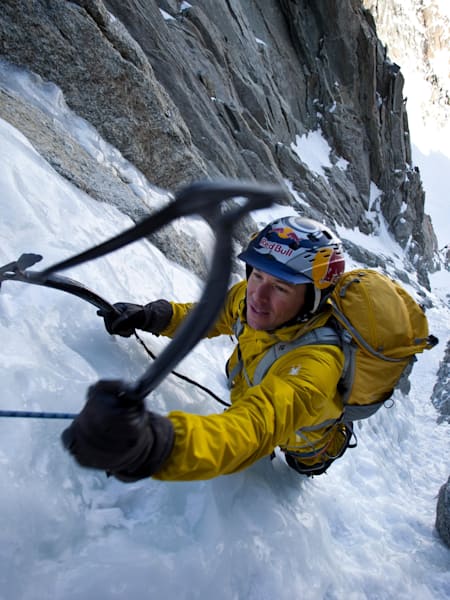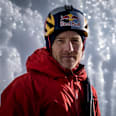I spend around 150 days a year climbing and skiing in below-freezing temperatures. In the last 30 years I've learned a lot about not turning into a human icicle.
Stoke your furnace and stoke!
First, understand that no one clothing combination is going to work for all situations. I go running at -30°C in only a light, highly breathable shell and thin baselayer with very thin gloves. I would sustain severe frostbite in minutes if I were to wear the same clothes while ice climbing.
The biggest error I see is that people don't vary their clothing to match their heat output. It's not about ‘layering’ but about finding a ‘moving’ outfit that's minimal and a ‘sitting’ outfit that's very warm.
Sweat is always the enemy while moving.
Dress for where you will be in five to 20 minutes rather than where you are. When you first step out of the car and into the cold to go for a ski tour or winter hike the temptation is to dress very warmly. But do that and you'll soon sweat and get your baselayer soaked, the insides of those big gloves wet, and then you're going to be cold. Better to start a little cold.
When you stop moving reverse the process before you get cold — so hat and big jacket back on, boots unlaced or unbuckled to keep good circulation in your feet, and more food in to stoke the furnace.
It's a lot easier to be psyched when your skin is dry and warm.
Sweat is always the enemy while moving. You need to be dry while standing around or working at a lower activity level. Sweat is an awesome mechanism for cooling a human but get wet and that evaporative cooling will get you really cold. It's actually much harder to stay warm at -1°C than -15°C because you sweat more while moving at -1°C, even if all you're wearing is a thin synthetic layer.
Wear a good high-quality synthetic baselayer over your entire body — I prefer this to wool, which simply does not dry as fast. Bring a spare top and socks and switch them after a long ascent. The difference in comfort and warmth is amazing not only physically but mentally. It's a lot easier to be psyched and have fun when your skin is dry and warm.
Bring spare gloves, lots of them. Most people get cold hands because they move in relatively big gloves, get sweaty hands and then stop moving and their hands literally freeze. The solution is to move in very thin fleece gloves. I bring up to five pairs of thin fleece gloves on most mountain trips and just expect them go get wet and then switch them out.
Finally, experiment — everyone's body is different, and you're stuck with yours so you might as well learn how to keep it functional. If you aren't warm in winter then you're doing something wrong. Being cold sucks all the fun out of the day so stoke your furnace and stoke!
Get more adventure on our Facebook page.






